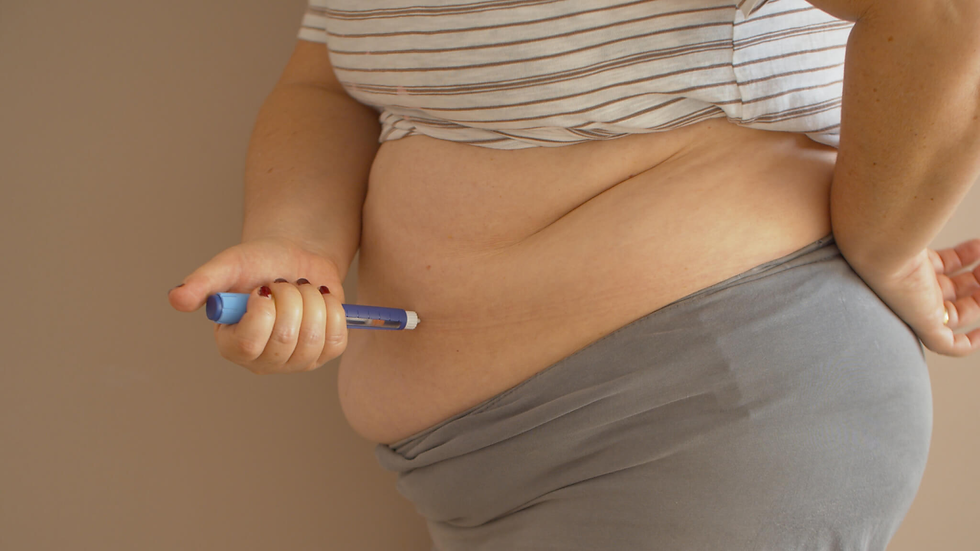Ultimate Guide: Copper IUD Insertion in Dubai Demystified
- kishwar adnan
- Mar 27, 2024
- 3 min read
Introduction to Copper IUD
Copper Intrauterine Devices (IUDs) have been a popular choice for contraception worldwide due to their effectiveness and convenience. Unlike hormonal methods, Copper IUDs don't involve the use of hormones, making them suitable for women who prefer non-hormonal birth control options. In Dubai, the availability of Copper IUD insertion services provides women with a reliable contraceptive method. Let's delve into the intricacies of IUD Insertion Copper In Dubai.
Understanding Copper IUD Insertion
Before undergoing Copper IUD insertion, it's essential to understand the procedure and its implications. Preparation typically involves a consultation with a healthcare provider to discuss the suitability of the Copper IUD and to address any concerns or questions. The insertion procedure itself is relatively straightforward and usually takes only a few minutes to complete. While some discomfort may be experienced during insertion, healthcare providers often offer pain management options to minimize discomfort.

Choosing a Provider in Dubai
When considering Copper IUD insertion in Dubai, selecting the right healthcare provider is crucial. Researching clinics and healthcare professionals specializing in contraceptive services is essential. Factors such as reputation, experience, and cost should be taken into account when choosing a provider. Additionally, understanding the total cost involved in Copper IUD insertion, including consultation fees and device costs, is important for informed decision-making.
Preparation for Copper IUD Insertion
Preparing for Copper IUD insertion involves scheduling a consultation with a healthcare provider. During this consultation, the healthcare provider will assess the individual's suitability for the Copper IUD and provide information about the procedure, including potential risks and benefits. Patients are encouraged to ask questions and address any concerns they may have before proceeding with insertion.
The Copper IUD Insertion Process
The actual insertion process of the Copper IUD is typically quick and performed in a clinical setting. The healthcare provider will first conduct a pelvic exam to determine the position and size of the uterus. The Copper IUD is then inserted into the uterus through the cervix using a specialized insertion device. Once in place, the device is released, and the strings attached to the IUD are trimmed to an appropriate length. After insertion, patients are usually advised to rest for a short period before resuming normal activities.
Recovery and Follow-Up Care
Following Copper IUD insertion, patients may experience mild cramping or discomfort, which can usually be managed with over-the-counter pain medication. It's essential to attend follow-up appointments as scheduled to ensure the Copper IUD is properly positioned and functioning correctly. Healthcare providers may also provide guidance on monitoring for any signs of complications, such as excessive bleeding or pelvic pain.
Common Myths and Misconceptions
Despite their effectiveness, Copper IUDs are sometimes surrounded by myths and misconceptions. Addressing common concerns, such as the risk of infertility or complications during insertion, can help alleviate anxieties and promote informed decision-making regarding contraception options.
Benefits of Copper IUDs
Copper IUDs offer several benefits as a long-term contraceptive solution. They provide reliable pregnancy prevention for up to 10 years without the use of hormones, making them suitable for women who prefer non-hormonal birth control methods. Additionally, Copper IUDs are reversible, allowing women to conceive shortly after removal.
Side Effects and Risks
While Copper IUDs are generally safe and well-tolerated, they may be associated with some side effects, including heavier periods and increased cramping. Rarely, complications such as expulsion or perforation of the uterus may occur. However, the overall risk of serious complications is low, and most women can use Copper IUDs without experiencing adverse effects.
Comparison with Other Contraceptive Methods
When considering contraceptive options, it's essential to compare the benefits and drawbacks of Copper IUDs with other methods, such as hormonal contraceptives or barrier methods like condoms. Each method has its advantages and limitations, and the choice ultimately depends on individual preferences and medical considerations.
Conclusion
Copper IUD insertion in Dubai offers women a reliable and long-term contraceptive solution without the use of hormones. By understanding the procedure, benefits, and potential risks associated with Copper IUDs, individuals can make informed decisions about their reproductive health. Consulting with a healthcare provider is essential to determine the suitability of Copper IUD insertion and address any questions or concerns.







Comments